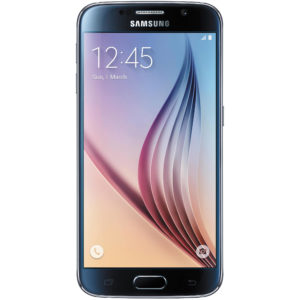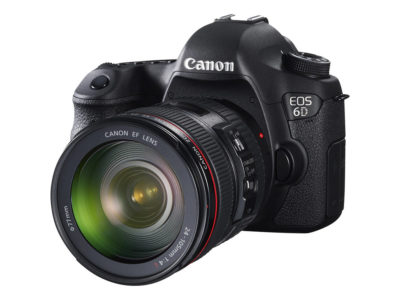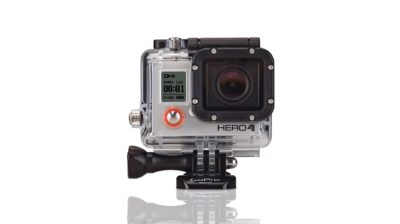The Camera Showdown: A DSLR, GoPro, and Smartphone Comparison
The options for shooting stills or video have increased tremendously over the last few years. Back when I was first shooting, I used an SLR (film) for high quality still images, a big-honkin’ 3CCD shoulder-mounted camera for high-quality video, and my phone to… talk to people. That was basically it. You might have had a point-and-shoot camera for family vacation pictures or a small Handicam for your kid’s baseball game, but generally, your choices were limited. Today that has all changed; most adults (and many children) in the US carry a high-quality video and still camera with them all the times in the form of a smartphone. Athletes and daredevils don’t even think of attempting something epic without a GoPro. And both independent producers and high-end production houses use DSLRs for that “cinematic” look and ultra high-resolution images. So, if you are in the enviable position of having access to all of these camera types, a DSLR, GoPro, and smartphone, how do you choose when to use which device?
When Quality Counts
The first rule of thumb is to consider your end product. Were you commissioned to shoot something for a client? Does the resolution, image quality, and ability to shoot in low light matter to the project? If the answer to either of these questions is “yes”, I would recommend going with a DSLR. While DSLRs are heavier and more cumbersome than an action or phone camera, that extra weight means a higher quality image. This mostly has to do with the glass in the lens and the size of the image sensor in the camera. DSLRs have much better lenses than even the best action camera or phone and definitely have larger sensors to capture and process the image. DSLRs also give you way more manual control than the alternatives; you can crank up the gain, balance for daylight, or choose the right optical focal length for the shot. With action and phone cameras, you don’t have much manual control and you definitely don’t have the ability to optically zoom in or out (don’t be fooled by “zoom” features on smartphones; it is a digital zoom, meaning you’re just getting a closer look at the same number of pixels). For anything that you plan to do professionally for a client or even a friend’s wedding, I recommend at least having a DSLR on hand as a part of your camera arsenal.
Getting in the Action
The second point to consider is your shooting environment. It may seem obvious, but many times I have seen people perched on the bow of a boat, climbing with one hand on a rock or bumping up and down on an ATV shooting with a DSLR or camera phone. This is a risky and stressful way to get these shots! If you are doing something that involves an unusual angle, a rough ride, or water, you should definitely use an action camera. Today’s action cameras have excellent picture quality and a huge number of options for mounting and protecting your camera. The biggest drawback with most action cameras I have used is that they need a lot of light to get those awesome images you see playing on the demo reels in the big box stores. As long as you have plenty of light and a secure way to mount the camera, what you can accomplish with an action camera is limited only by your imagination. One other consideration in using action cameras is something that I heard Nick Woodman, Founder and CEO of GoPro, say in an interview in Forbes. When Mr Woodman was asked if he was worried about the prevalence of high-quality camera phones displacing the GoPro, he said, “this [smartphone camera] is for reactive capture, and the use case for a GoPro is more proactive where you’re going to want to create some meaningful content and capture perspectives that you can’t capture with your smartphone.” That concept really stuck with me and I think it sums up how an action camera should be used: in a well thought out way that adds a unique perspective for your viewers. Of course, the other aspect of the action camera is its versatility and ability to withstand drops, vibration, water and other things that would destroy your DSLR or phone screen faster than you can say “I should’ve bought the protection plan.”
Shooting on the Fly
Finally, I do believe that there is a very important role for your smartphone camera: everyday life. It’s almost always with you! And if you see something interesting happening, it’s a great way to capture the moment. I know there are films that have been shot entirely on the iPhone and they look pretty good (heck, they even have their own film festival now). But, remember that when a camera phone was used to make something that looks cinematic, there were probably third party lenses, professional sound recording, gimbals, and a huge toolbox of attachments that most people would never have for their smartphones. One advantage that mobile phones have over DSLRs and action cameras is a wide variety of software that anyone can download and use. Hyperlapse can fix shaky shots and create really smooth effects. Digital filters can be applied on the fly for some interesting shots. And editing software on your mobile device can make shooting and editing something you can do anywhere. Especially if you are interested in maintaining a conspicuous social media presence, being able to quickly churn out content is infinitely easier with a smartphone by your side (or in front of your face, as it were). But, ultimately nothing beats the immediate access that most of us have to a decent quality HD camera right in our pocket at all times! If you do plan to use your camera phone for more in-depth video projects, just be sure you do two things: charge your battery… and shoot in landscape orientation!
While I know there are many cases you can make for each device in different situations, I hope that this short article gets you thinking about what the best tool for the job should be. Just being aware of the subtle but important differences between the camera platforms puts you ahead of most people who think everything they see is a nail… because the camera they are holding is a hammer. I hope you found these tips helpful!





You didn’t mention real camcorders. They are the best choice for many applications.
thanks for the nice sharing
I am using Samsung S8 phone. I spent a few days playing with the 12x lens. Overall it does extend the range quite a bit. You can resolve features at distance that you could not resolve with the phone alone. The 3-stars are for the following issues: First, there is a severe field distortion when the lens is used. I checked photos posted by another user here and I see the same issue there. Windows, rooftops, and other straight lines become severely curved with the lens. Second, there is obscuration of the field of view by the lens plastic. It takes some effort to align the lens to the camera. Since the S8 is a bit slippery, the lens moves and slides a bit as you aim the phone. Third, it is impossible to obtain good focus across the field of view. As you can see on the attached photo, the bag, which is in the center of the field of view, is in focus, but anything away from the center is out of focus. That is probably the most annoying issue.
Best regards.
Thanks so much for your comment and feedback Jerome!
Thanks
High quality 4K ewith an extremely affordable price. Fianlly, there is something that does not cost an arm and a leg like GoPro. This works just as well as GoPro new model. The microphone catches up the sound and it sounds crisp. Love it guys